Who doesn’t love going to the range?
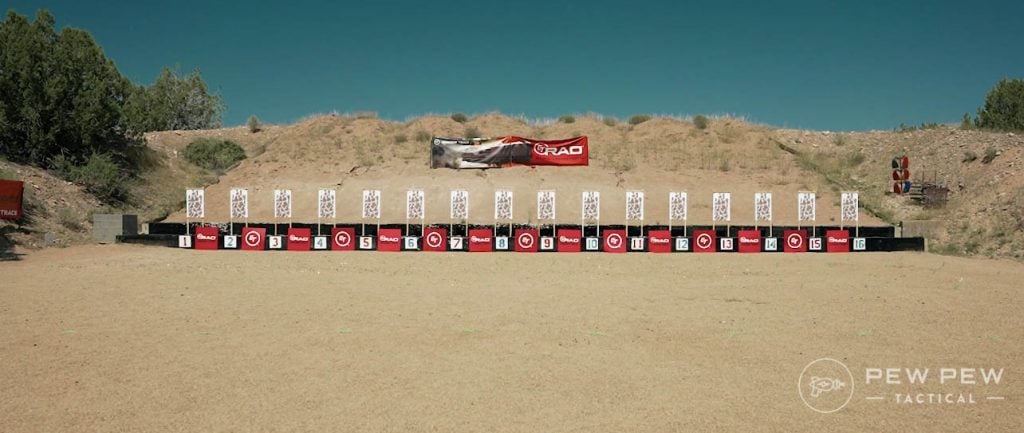
For me going to the range is a lot like going to the gym. I can go there and use the entirety of my time focused on one specific task. It’s relaxing, fun, and something I always look forward to.
However, sometimes it shouldn’t be so relaxing. Not if I’m taking my training seriously. Sometimes shooting should be stressful.
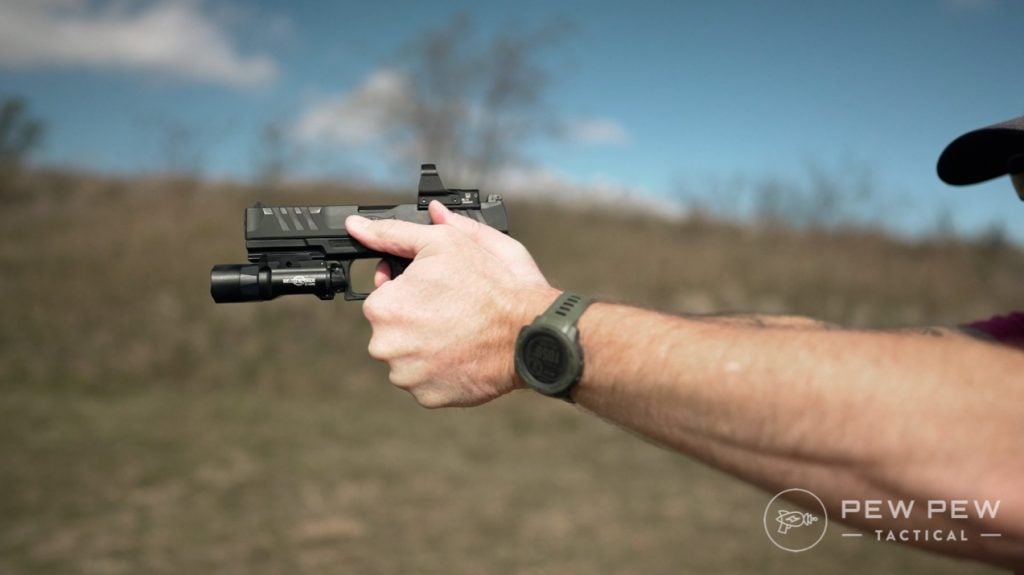
Stress shoots emphasize a physical or cognitive load that creates an entirely new layer of training and thought processes.
So let’s dive into that world a little more. We’ll talk about why you might want to consider adding a little stress to your range routine and, more importantly, ways to induce stress.
So keep reading!
Table of Contents
Loading…
Why Introduce Stress Into Shooting?
Stress shooting helps your body mimic the reaction and feeling you would experience in a real gunfight.
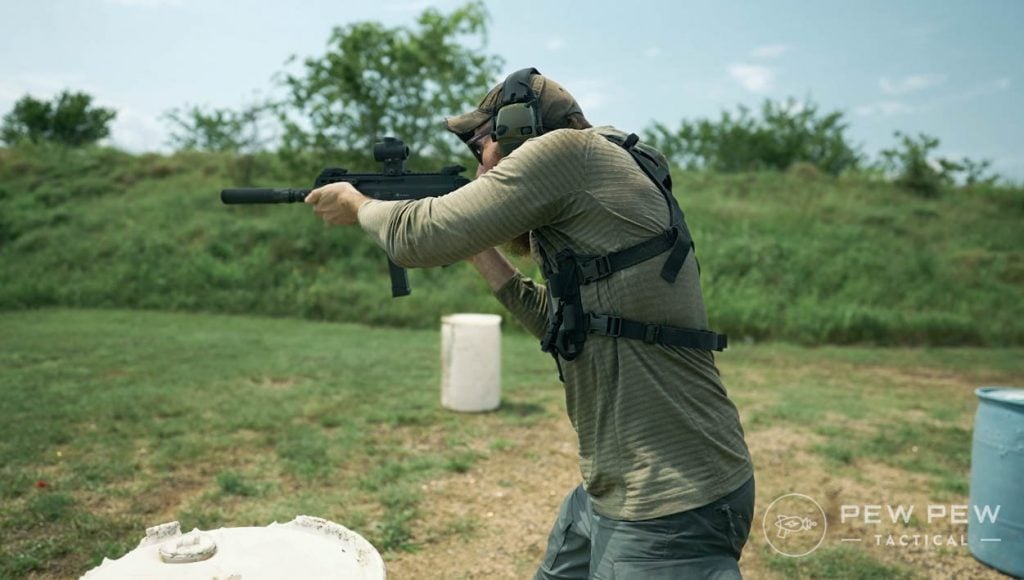
This style of shooting helps you identify certain feelings, as well as mental and physical reactions, that you’ll encounter in a real combat situation.
Then you can learn how to be effective while dealing with those reactions. Being in a gunfight is no walk in the park, and it will tax your body in ways you should be prepared for.
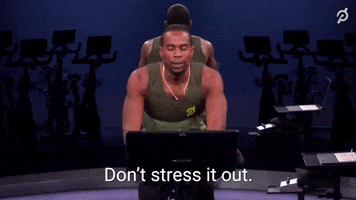
Inducing stress is a form of stress inoculation. Think of it as a vaccine. You get a little stress here and there, so you can learn to deal with bigger slices of stress.
This kind of inoculation is standard in military training.
I’m sure everyone here has seen Full Metal Jacket, or maybe just Youtube clips of drill instructors yelling and screaming. Well, that’s not just for fun. That’s an example of stress inoculation.
Once you’ve lived under the constant and violent surveillance of a drill instructor, you’re better prepared to deal with the stress of duty, conflict, and war.
Stress shooting does the same thing in a specific task.
Today we are going to talk about various ways you can induce stress into your shooting, as well as into your dry fire and weapons handling.
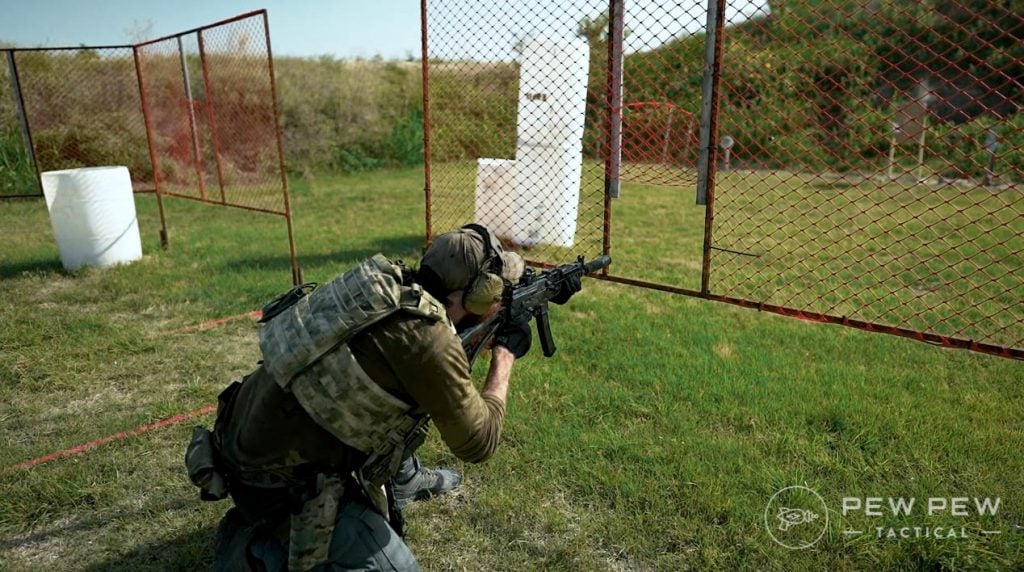
Break Out of Your Comfort Zone
First, break out of your comfort zone.
If all you’ve ever shot is on a square range, then seek out professional instruction. Your first class will certainly be a little stressful.
But you’ll be under the eyes of a professional and challenged to function around a group of people doing performance-based training.
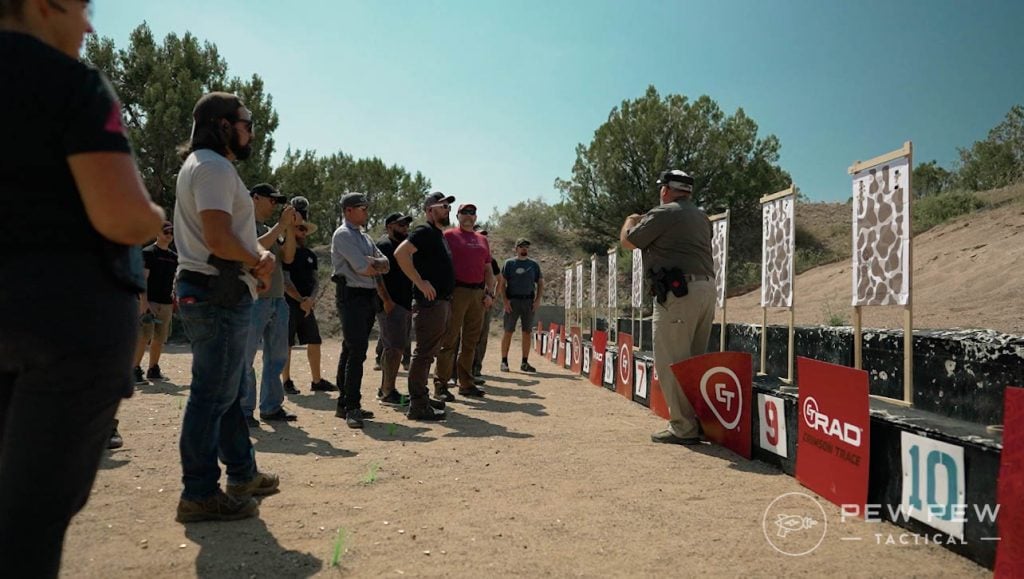
One of the most stressful things you can do is force-on-force training.
Find a class you can attend that teaches force on force and be ready to perform. Force-on-Force classes utilize Simunition or airsoft guns to simulate an actual gunfight.
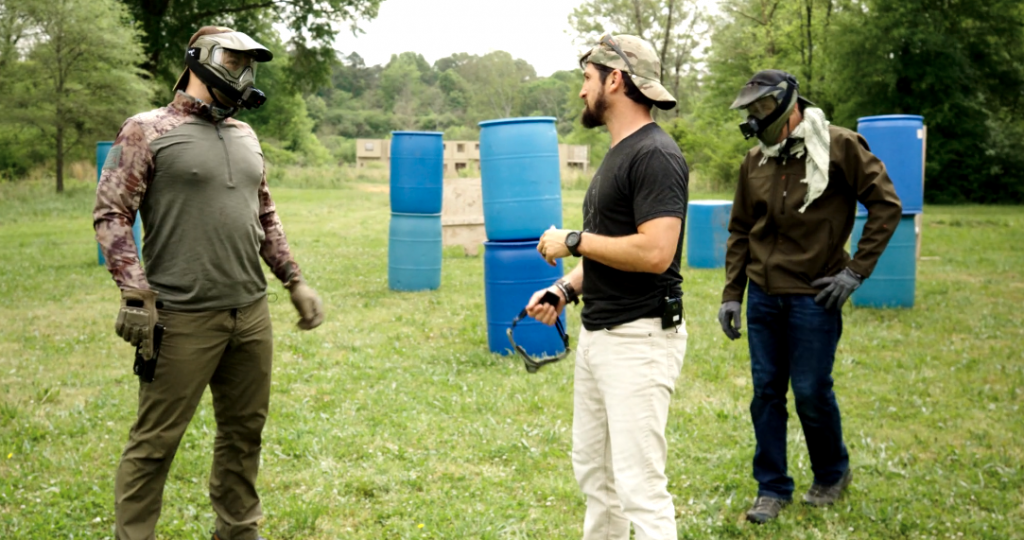
Trying to draw while under attack is tough, and when you get hit, it hurts. A pain penalty will have your heart racing, especially the first few drills.
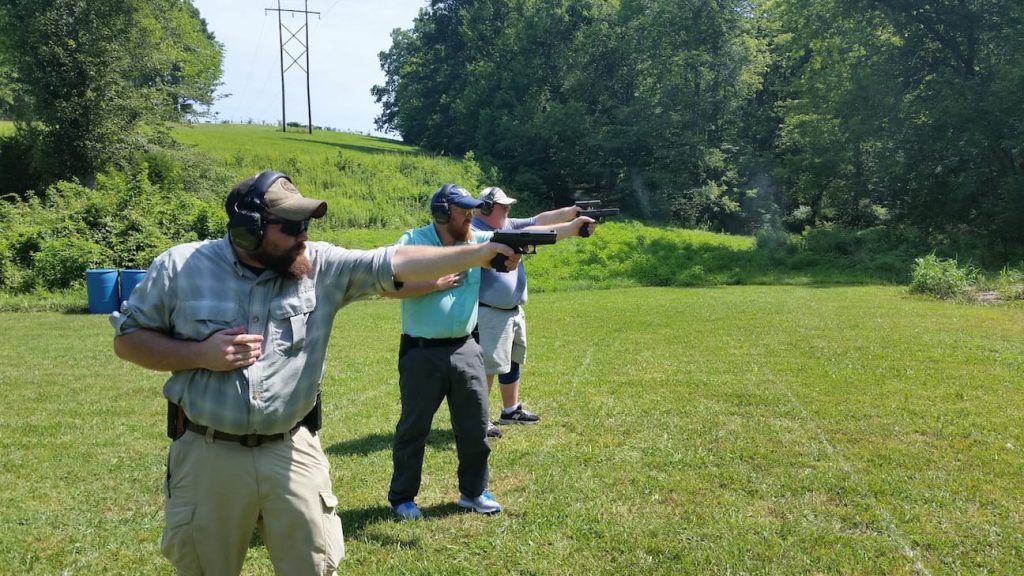
Outside of a class, introduce more dynamic shooting into your practice.
Don’t jump above your skill level and rush to do something unsafe, but there are steps you can take to switch things up. Change is good, and change is stressful.
Introduce new elements like shooting from behind cover. Shooting in various positions while behind cover can be a real pain, especially if you use cover correctly. Get low and uncomfortable if possible.
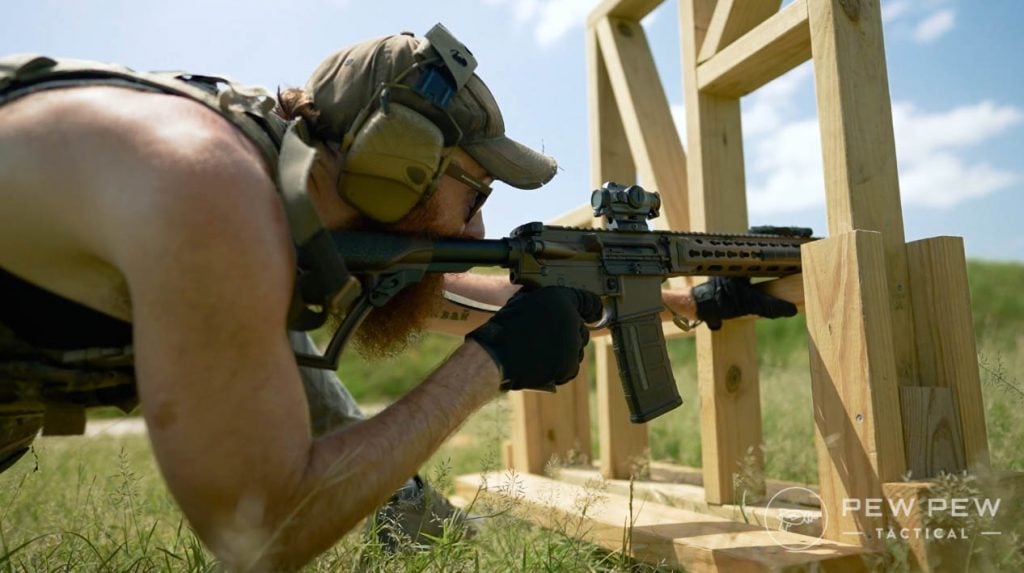
Shoot with hand more often, and practice swapping hands.
When I shoot one-handed, I keep a kettlebell in the other hand to render it useless. Swap shoulders with long guns and load real buckshot with shotguns.
Start your drill with the gun laying on the ground or on a table unloaded. That way loading and readying the weapon is part of your drill.
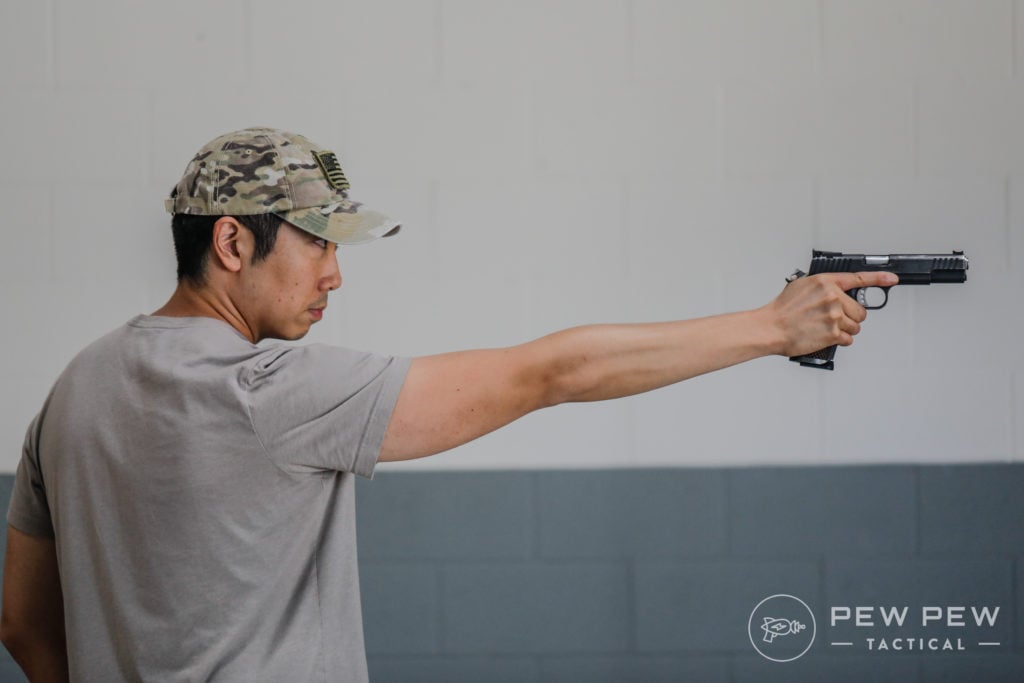
I also like to mix in random dummy rounds into my magazines. That incorporates on-the-fly malfunction drills into training as well.
Mix in a dummy round and run an El Presidente drill and you’ll feel the stress as your gun goes click.
Little things like this are great for starting that stress inoculation. With shooting, it’s all about walking before you run.
At first, it feels hard to break out of that square range comfort zone, especially when you start missing a little more. However, the more you do it, the better.
Once you feel that you can step out of that comfort zone with ease, then we can move to apply more direct cognitive and physical stress loads.
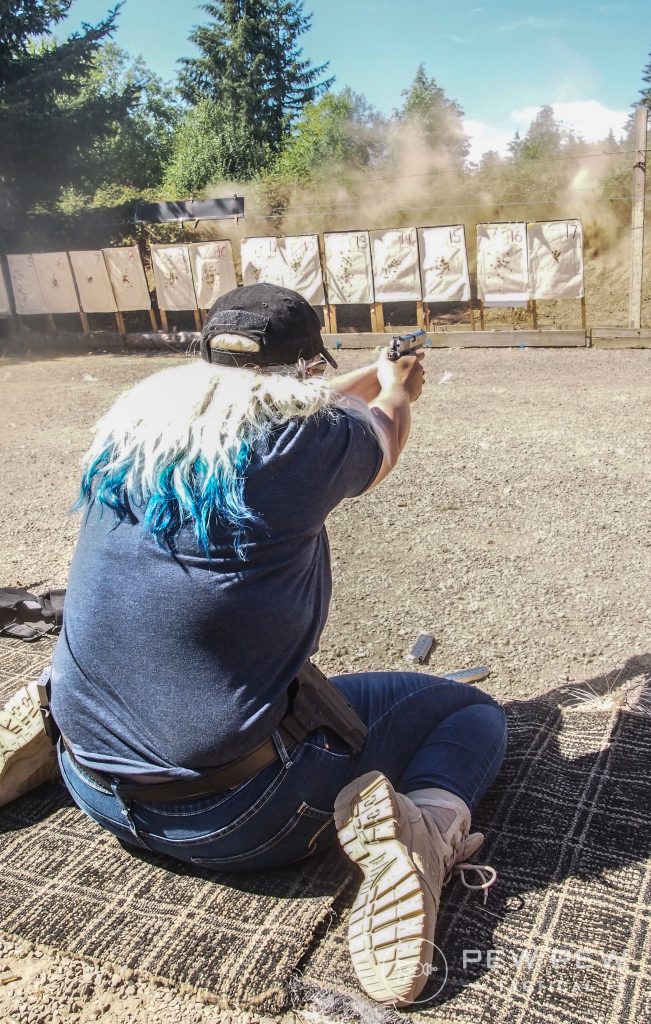
Applying a Cognitive Load
Cognitive stress is breaking down mental barriers in your performance. Anxiety is usually the biggest mental barrier.
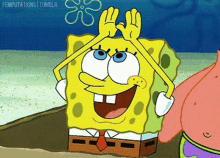
Confidence can overcome anxiety, and one way to build confidence is to challenge yourself and succeed.
Adding a stressful cognitive load to your training is one way to break down those mental barriers.
Here are a few ways you can add a little mental stress to your shooting.
Use a Shot Timer
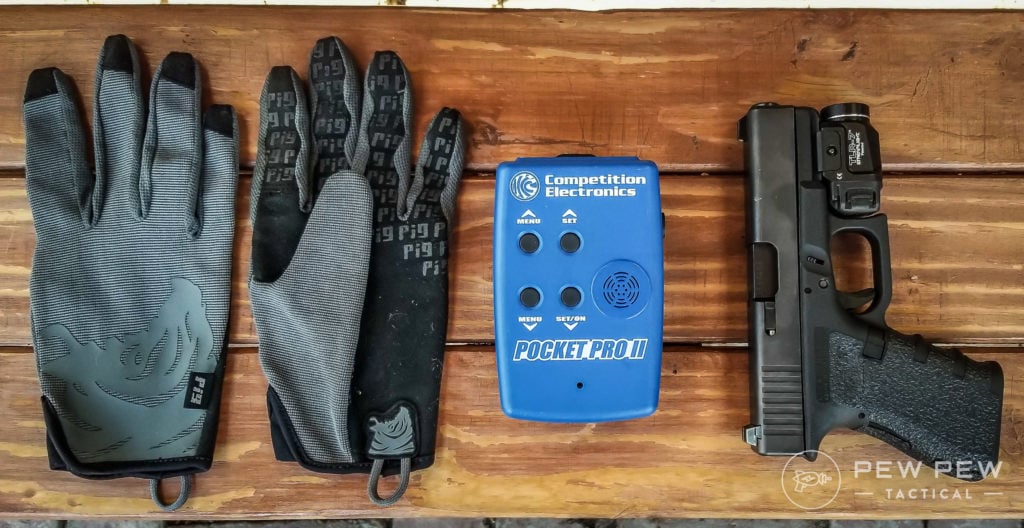
Shot timers are a must-have for serious training. They provide objective data that breaks down your speed and capability in an easy-to-see and understand way.
And they also provide a good amount of stress.
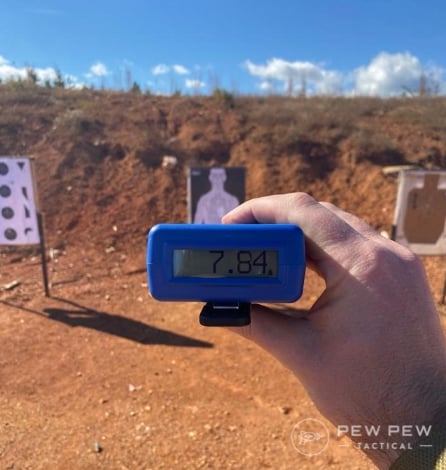
Most provide a setting that allows the timer to randomly start when the button is pressed. In the settings, you can set the random timer to go off between two-time points.
With mine, it is set to go off between 1.5 and 5 seconds after I press the go button.
Prices accurate at time of writing
Prices accurate at time of writing
-
25% off all OAKLEY products - OAKLEY25
Copied! Visit Merchant
Waiting for that timer to go off creates a level of stress and anxiety that’s great for training purposes.
Setting a par time for you to complete an action within can also create stress. Plenty of drills like the El Presidente come with a time limit.
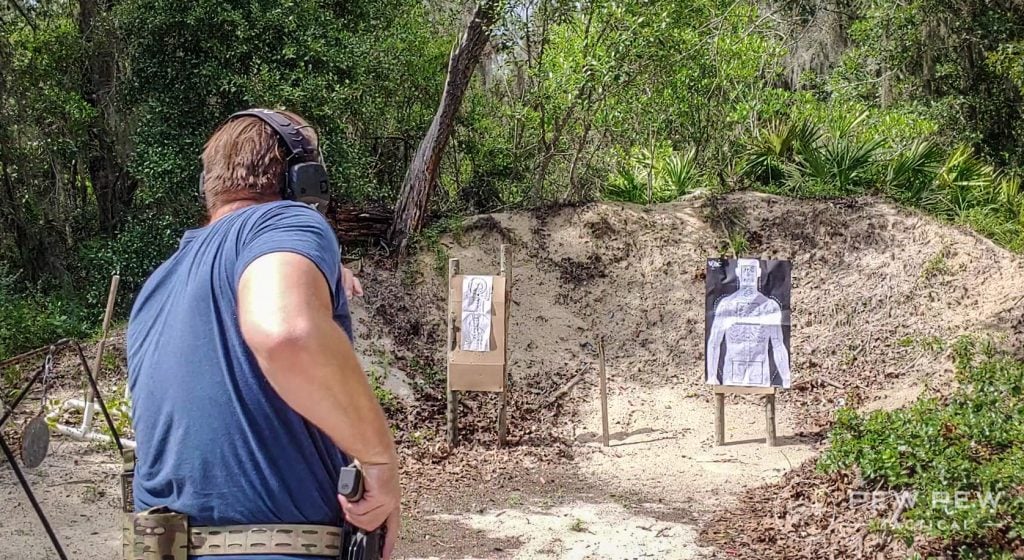
If you don’t shoot the drill successfully within that time limit, you fail. No one likes to fail.
The time limit is always on your mind when you start the drill and adds a different layer of stress as you shoot, reload, move, or whatever a particular drill requires you to do.
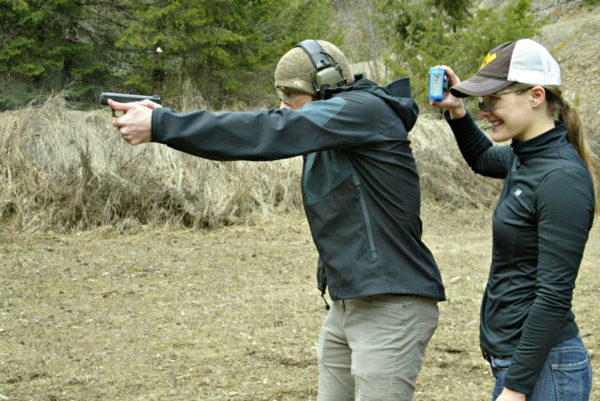
No Shoot Targets
When you set up your range or whatnot, try introducing no-shoot targets that are close to the target you are aiming to shoot.
You can set up a mix of no shoots and shoots and then run a normal shooting drill with the no shoots being in your way ever so slightly.
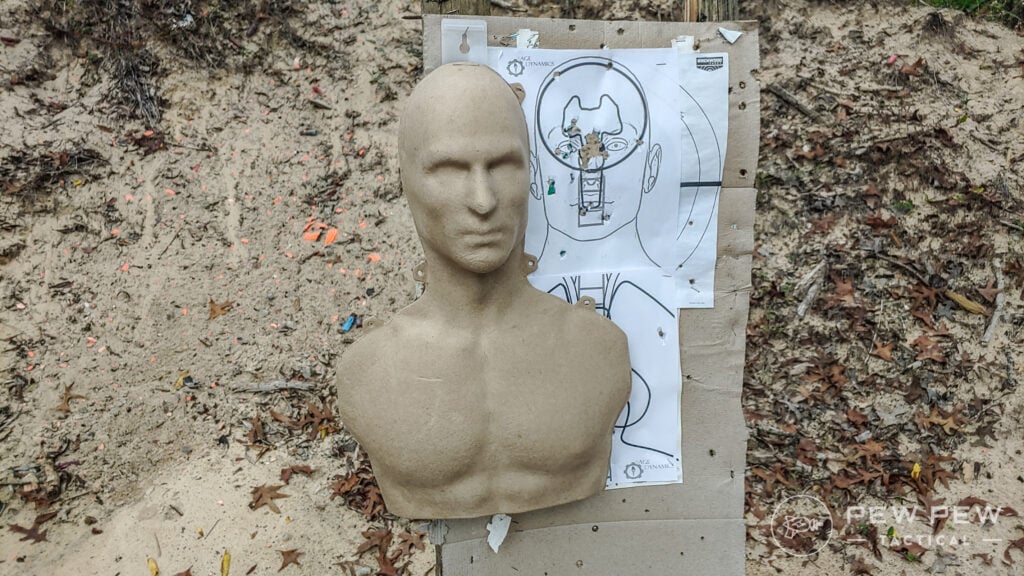
If you hit a no-shoot, then it’s an instant failure.
Kind of the same concept as this iconic scene from Men in Black (1997):
I know what you’re saying, “Travis, I can only do that at a range like yours! How can I do that at an indoor range?”
Well, I’m glad you asked…
Go print something like the Guerilla Approach Consistency Target and designate some of the smaller dots as no-shoots.
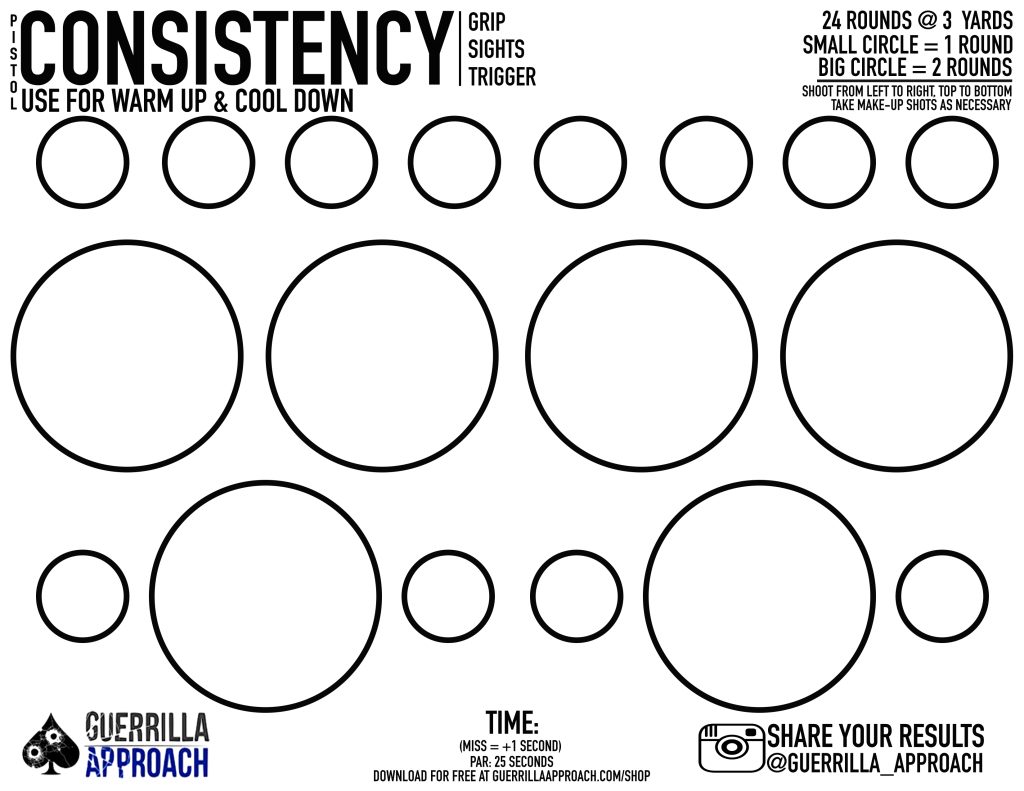
It’s perfect for an indoor range and very simple and affordable to do so.
Hit the indoor range running and, if necessary, increase the distance or decrease the par time.
Mix a decent range with low par time and no-shoot targets, and you’ll feel that stress skyrocket.
Ammo Limits
Limiting ammo induces stress by requiring accuracy under pressure.
If you run a drill that requires 10 rounds, only load 10 rounds. You have zero makeup shots, and if you miss, you fail.
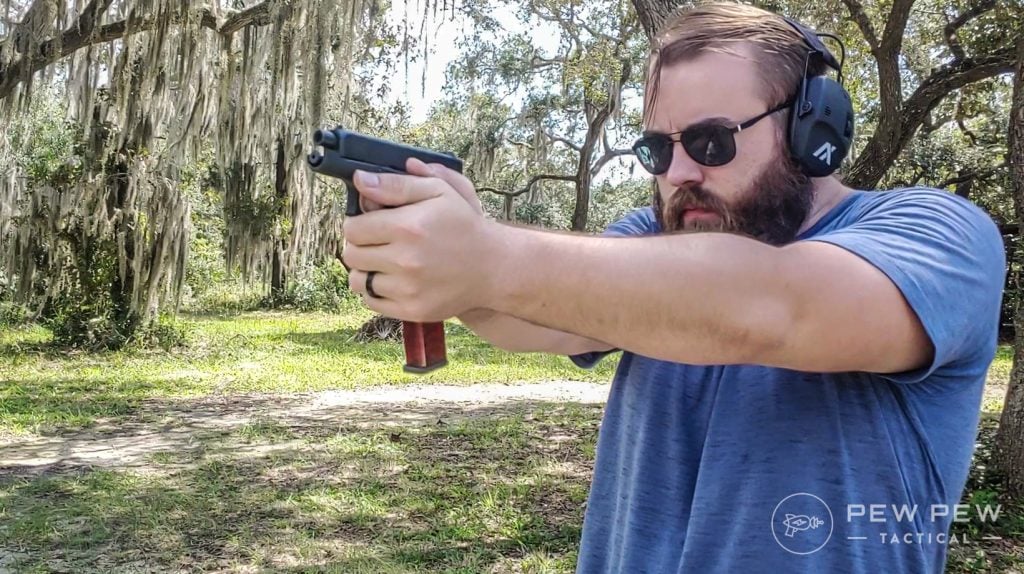
If you want to make it more complicated, then mix shot requirements with target requirements.
USPSA targets work best for this due to their designated zones. Assign a value of shots to each zone and use a multitude of targets.
What I do is utilize two rounds for every target.
If I have four targets, then I use eight rounds for the drill. The A zone requires only one hit, C zones require two, and D zones require three shots. There are multiple ways to succeed and fail.
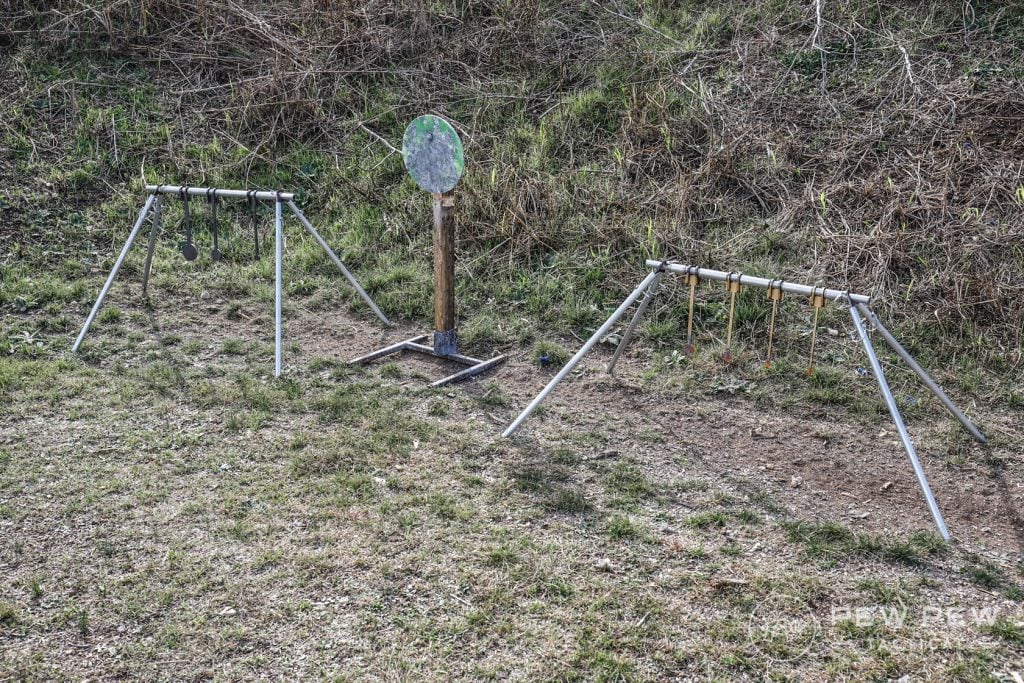
Do this with a timer, and you’ll be stressed not just by shooting but by how to appropriately dispense ammunition.
Heck, add a time and no shoots to get the brain juices going.
Have drills that require you to reload and have someone else load your magazines.
I keep going back to the El Presidente, but it makes for a good example for these various methods of stress inoculation.
Anyway, the El Pres requires 12 rounds total with a reload between strings of fire.
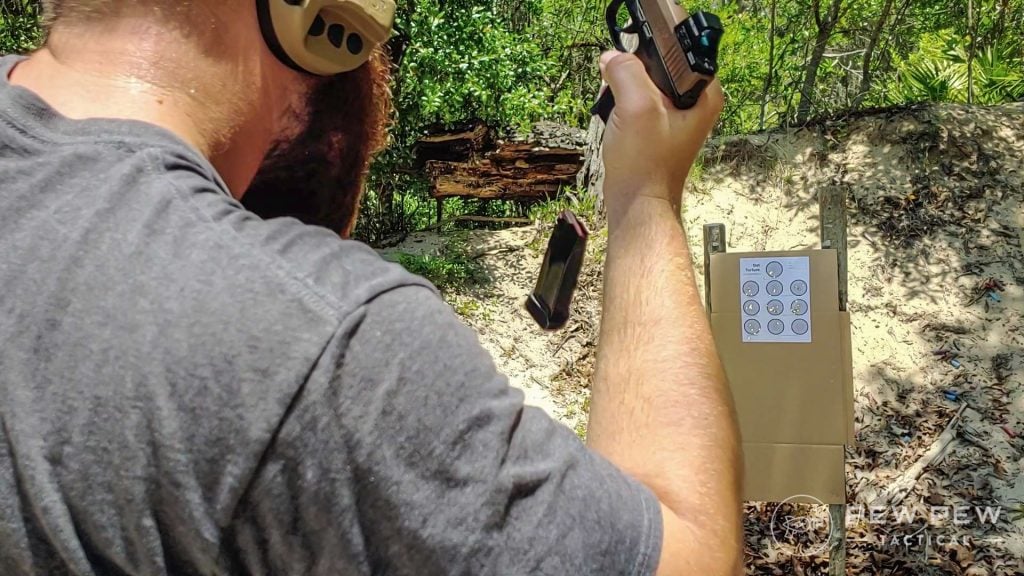
When you know that you are going to fire six rounds and then reload, then it’s predictable, not stressful.
If someone loads one mag with four rounds and one with eight, then your reload isn’t predictable, and you’ll never see it coming.
Fear of the unknown is stressful.
Competition
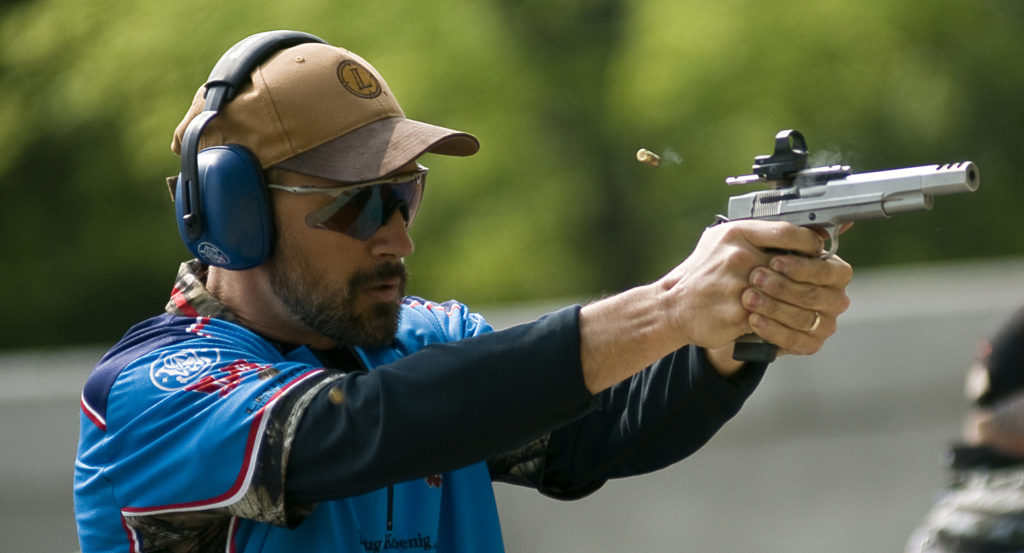
Competition is always stressful. Failing sucks, but losing to another person sucks even more.
Competition can mean many things in this particular subset of mental stress shooting. You can take it as organized competitions like IPSC and USPSA, or we can also use informal competition.
IPSC, USPSA, and larger-scale competitions are much more stressful.
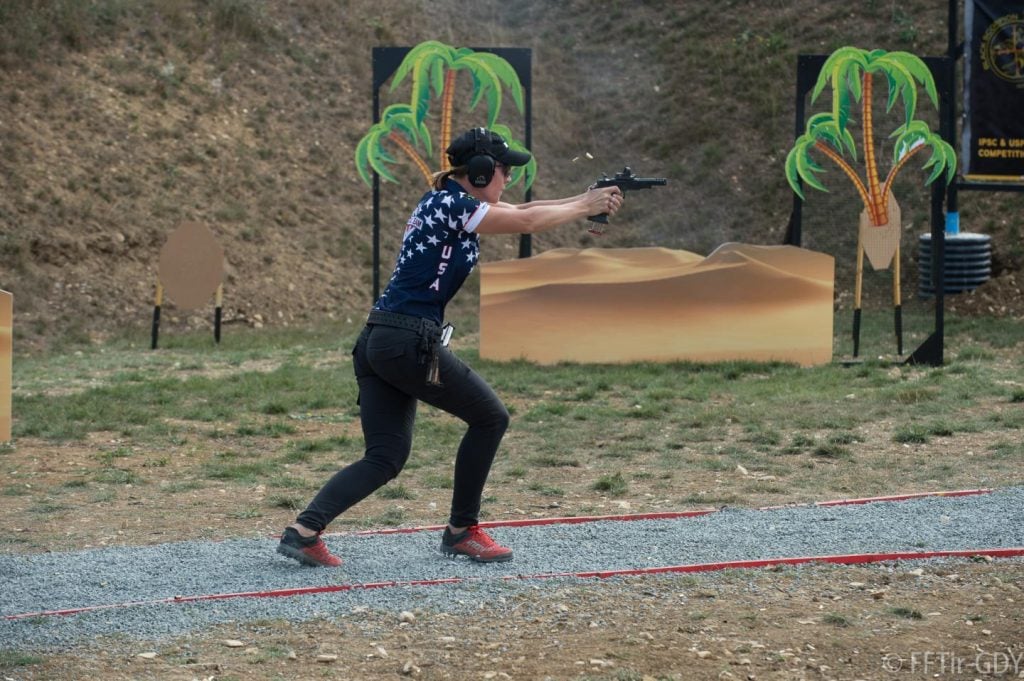
They have dozens of competitors, varying skill levels, and different stages that make it tough to predict. You might be tasked with no shoots, small targets, shooting through windows, shooting in various positions, moving targets, and more, all against a timer.
Informal competition among friends can also make things a little more stressful.
For one, you know trash talk is coming when you throw a shot. Two, it might be tougher to perform in front of people you actually know.
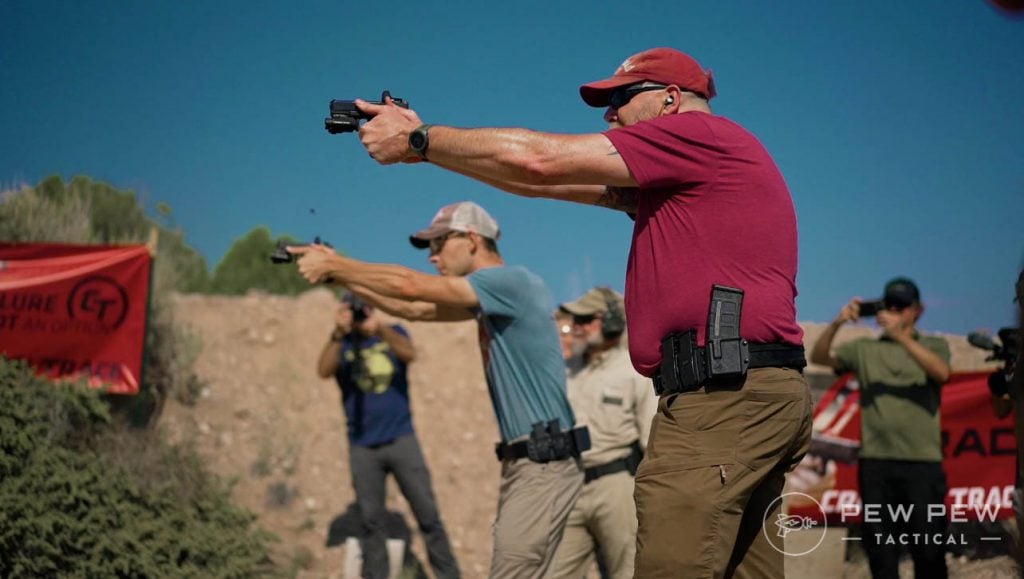
Informal competition can be quite simple and involves nothing more than trying for the best accuracy and time for a specific drill.
Make it dynamic if possible, and as always, integrate a timer to keep things fun.
Applying Physical Stress
Physical stress is another important consideration when you begin training.
Mental stress is one thing, but physical stress makes it tough to be accurate and capable physically. Gunfights are adrenaline-filled affairs where your heart is racing.
Learning to shoot through these feelings will make you much more effective in a defensive situation.
Shoot and Exercise
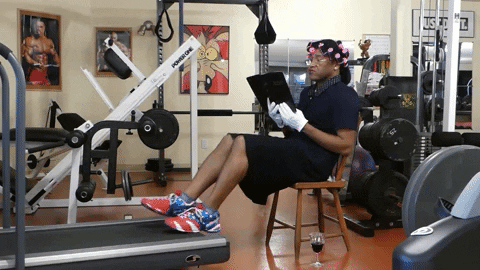
Get your heart rate up through some basic exercises. Run yourself out of breath and then try and shoot your favorite drill or nail that 4-inch gong at 50 yards with your whole body shaking and heaving.
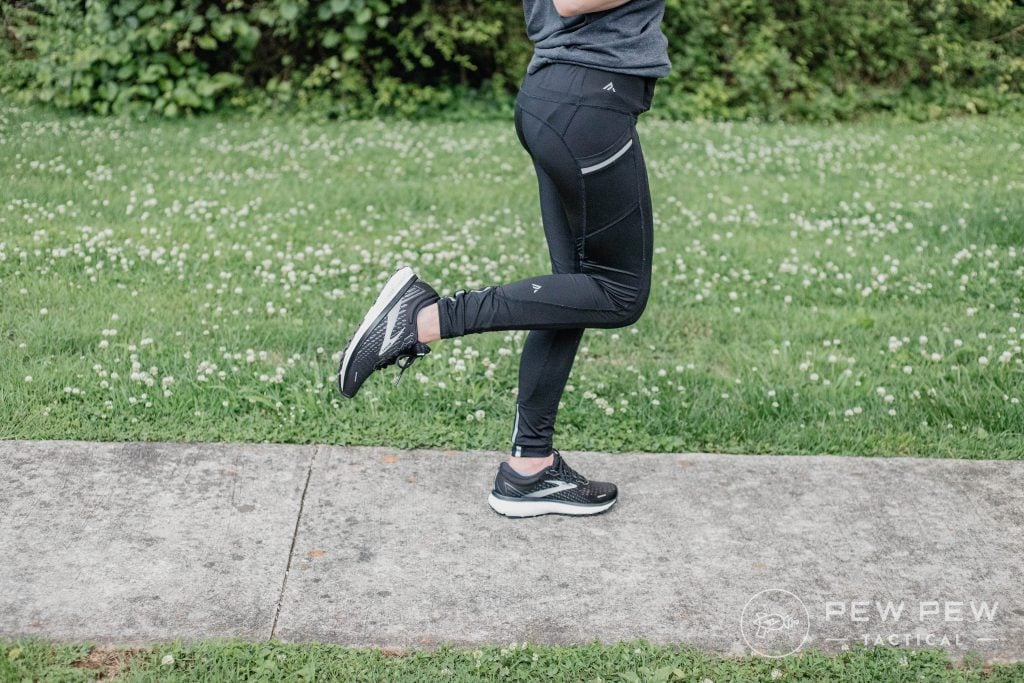
It will be a challenge for sure.
Popping off burpees, running sprints, doing kettlebell swings, and sandbag carries will get that heart rate up awfully fast.
Do enough physical movement and exercise till you truly feel winded and see how well you shoot.
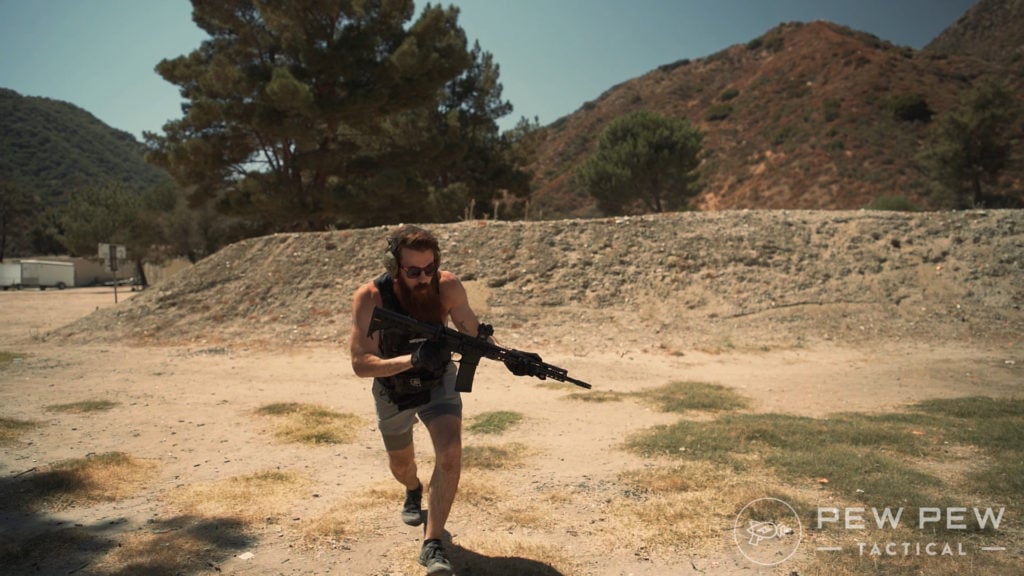
Then do it again.
And again.
There are lots of ways to implement physical fitness into your shooting, and madmen like Pat Mac have made it their signature thing.
Seeing Pat running hundreds of yards, throw a kettlebell, and then flip tires and go 10-for-10 with his rifle is something to behold.
He only got that good through consistently stressing his body and creating uncomfortable situations.
Punish Yourself
Here’s a fun one. When you go to the range and shoot a drill with a standard, be willing to punish yourself if you fail.
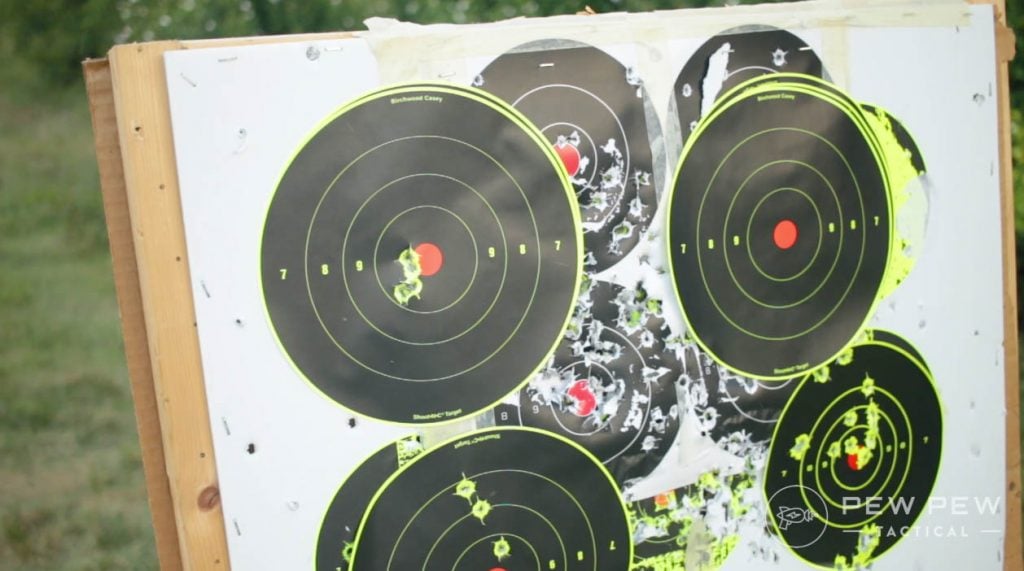
El Pres says it takes 10 seconds to complete with 12 hits in the A zone. If you fail on time or accuracy, punish yourself with some PT.
For every second you are over a drill’s specific time standards, do a set number of burpees. If you fail the accuracy standards, run a set number of sprints for every dropped round.
Punishments add both mental and physical stress to your shooting.
Interval Timer Shooting
My favorite thing to do is use the interval timer on my Fitbit and set it for 30 seconds of exercises and 10 seconds of rest.
I do some form of workouts for the next 30 seconds, and during the 10-second rest, I execute simple shooting drills like a failure to stop drill, a box drill, or reload drills for ten or so seconds.
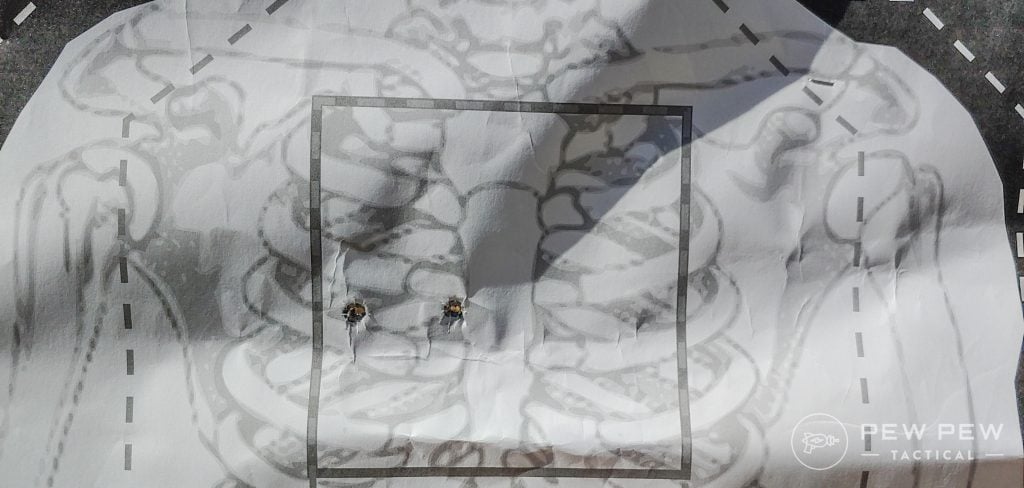
I leave some room to reholster, sling, etc., in those 10 seconds. I do this for 2-minute intervals before I take a reset break to reload magazines, set up targets, drink water, etc.
The Kasarda Drill
Karl Kasarda of Inrange released a drill earlier this year that features a kettlebell toss, running, and getting to the prone.
It’s a great physical stress drill that requires speed, strength, agility, and accuracy to complete.
Watch John’s soul leave his body while running this drill in the video below.
Conclusion
Stress-based shooting is invaluable, helping you prepare you for the real thing.
A 2018 study took a group of police officers and put them through several stress-based drills, including shooting with real persons in a hostage-like scenario and shooting dummies in the same scenario.
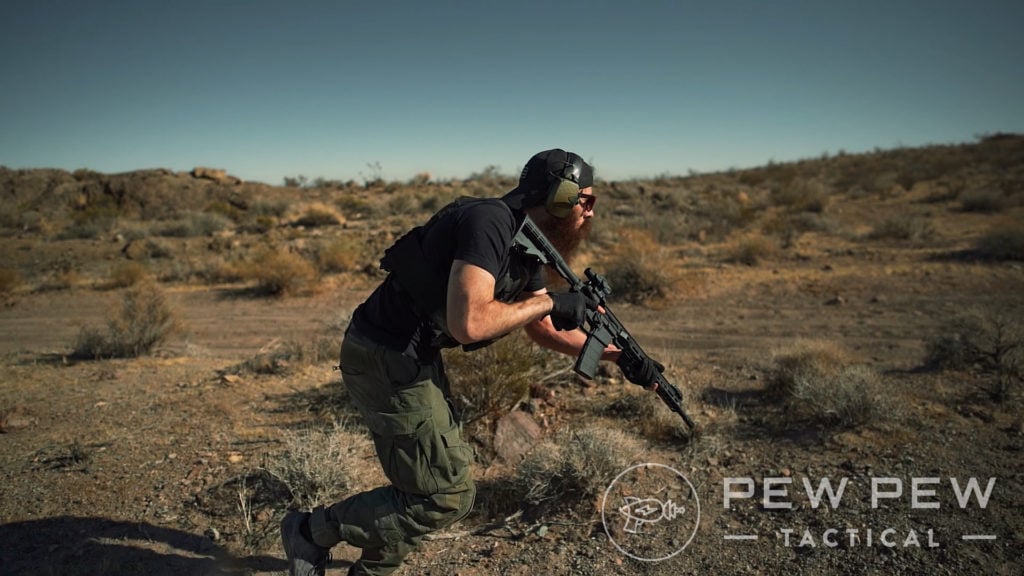
Initially, the test showed major performance differences between the high-stress presence of real people and the low-stress performance of shooting with dummies.
However, the more candidates trained, the more the performance gaps shrunk between the situations. They observed lower self-reported stress levels, lower heart rates, and faster heart rate recovery times the more they trained.
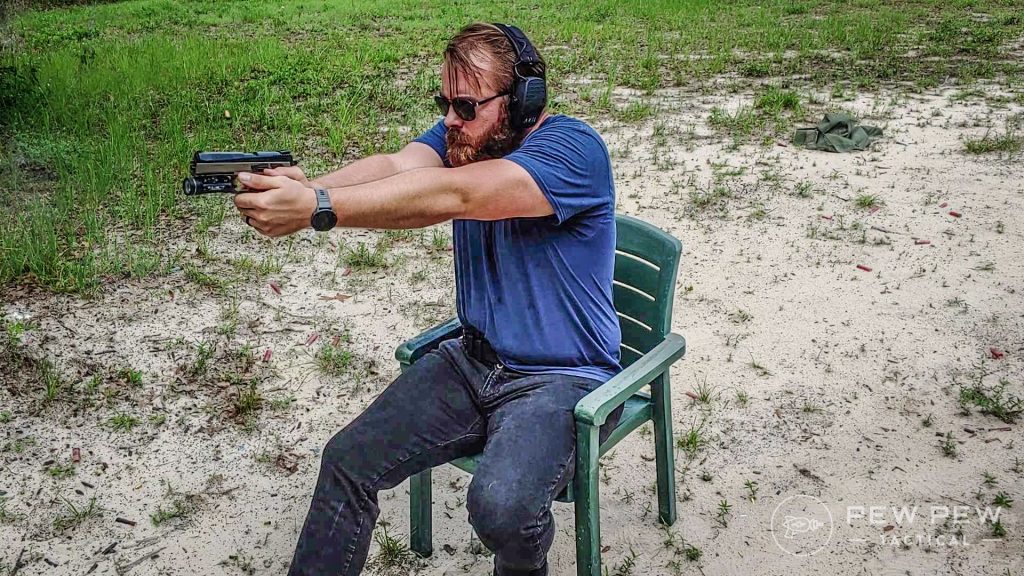
So, yeah, it’s worth it to incorporate into your routine.
What say you? Do you train with stress? How often and what kind of stress do you put on yourself? Let us know in the comments below. Need some more training ideas? Check out the Best Shooting Drills: Pistol, Rifle, & Shotgun and the Best Low-Round Count Drills.

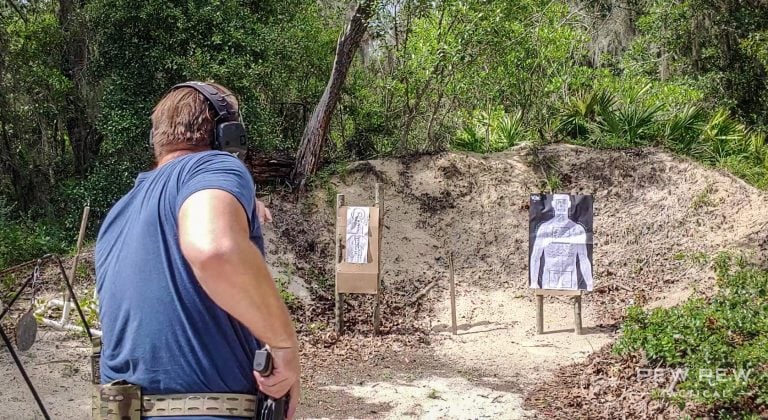








1 Leave a Reply
Pat Mac has a great book called TAPS Tactical Application to Pistol Shooting that is all about realistic training. “Train to win”.
It has drills and exercises in the back and regiments to try. Its an awesome read.